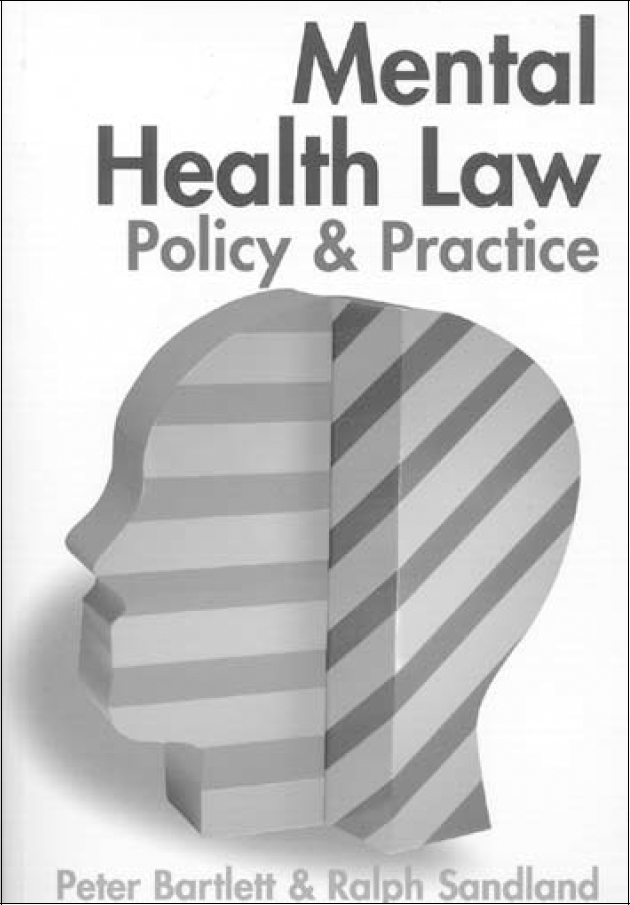As the authors acknowledge at p. ix in their preface, there is no shortage of books on aspects of mental health law; they cite, for example, Eldergill's magisterial work on mental health review tribunals (MHRTs), Richard Jones' comprehensive Mental Health Act Manual and Brenda Hoggett's (The Hon. Mrs Justice Hale's) academic approach to mental health law in its various aspects. So, what, you may ask, do two academic lawyers bring that's new to the topic? Well, it depends on what you're looking for. Their stance is predominantly socio-legal; that is, they place discussion of past and current law and practice within sociocultural parameters. In essence, an examination of medicalism v. legalism, and on the whole they succeed. This is a substantial tome and not to be read from cover to cover. Its greatest use is as a source of well-informed reference. Those who teach mental health law and practice will find it very useful as it is well referenced and upto-date with its legal case citations. Psychiatrists may find some of the authors' allegiances to the works of Foucault and others not entirely to their liking, but they should overcome their prejudices. As a lay member of a MHRT for many years, I was particularly interested in their discussion and criticism of the system. I must confess I sometimes feel that those who criticise our practice might make their criticism more measured (and therefore more cogent) if they had actually sat on MHRTs and thus had some experience of the problems involved in reconciling patient need against public safety. Having said that, I did not find anything in the book that made my hackles rise unduly.

This is not to say that the book is free of error. Some examples follow. At p. 152 (line 5) there is a serious ‘typo’ - the word psychotic appears instead of psychopathic; on p. 154 (last line) the authors repeat the frequently found error that Section 136 of the 1983 Act refers to a public place; it doesn't, it refers to a place to which the public have access (not quite the same thing) and at p. 257 the once titled Aarvold Board is now more correctly cited as the Home Secretary's Advisory Board on Restricted Patients. It is also something of an exaggeration to refer to the poisoner Graham Young as a mass poisoner. Dennis Nilsen's name is misspelt, and at p. 260 the author's short statement as to the time an offender patient is likely to remain under conditional discharge supervision is confused. At p. 273 I wish it was the case that tribunals sit ”in a committee room in the hospital” - if the authors visited a range of hospitals they would find a very different picture indeed one of their own local district general hospitals would readily confirm my observations. Finally, at p. 323, the authors assert that the case of Clunis was the first in a long line of homicide inquiries. Not so, the Sharon Campbell report, published in 1988, predated Clunis by some time.
Despite the above quibbles this book deals usefully with a wide range of mental health law and practice, including an extended discussion of the vexed question of mental incapacity. Thus, there is something for everyone. However, don't read it if you are expecting a non-drug-abusing quick fix!



eLetters
No eLetters have been published for this article.